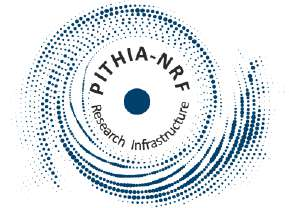Matthew West and Erik De Witte are visiting the STCE on June 20th and will present a seminar on the Vigil Mission, followed by a discussion with the participants on possible collaborations.
Speakers:
Matthew West (Vigil Mission Scientist, ESA/ESTEC) and Erik De Witte (Vigil Payload Manager, ESA/ESTEC)
Title: The Vigil Mission
Abstract:
The Vigil mission will be the first operational space weather monitoring mission deployed at the Sun–Earth Lagrange Point L5, providing a unique vantage point approximately 60 degrees behind Earth in its orbit. From this position, Vigil will enable early detection and continuous tracking of solar activity directed toward Earth, significantly enhancing lead times for space weather forecasting and mitigation.
Vigil carries six scientific instruments that together provide a comprehensive picture of solar and heliospheric conditions. Two in-situ instruments will monitor the local solar wind environment at L5: the Plasma Analyser (PLA), developed by University College London’s Mullard Space Science Laboratory (UCL/MSSL), will measure solar wind ion densities, temperatures, and velocities; and the Magnetometer (MAG), developed by Imperial College London and the Institut für Weltraumforschung (IWF), will deliver high-resolution vector measurements of the interplanetary magnetic field.
For remote sensing, Vigil includes instruments observing the Sun and heliosphere across multiple domains. The Compact Coronagraph (CCOR), built by NOAA and the U.S. Naval Research Laboratory (NRL), will observe the outer corona from approximately 3 to 22 solar radii, capturing the onset and early propagation of coronal mass ejections (CMEs). The Heliospheric Imager (HI), led by Leonardo SpA in Italy, will track CMEs and solar wind structures as they travel through interplanetary space out to 50 degrees elongation.
To monitor the solar surface and low corona, Vigil is equipped with the Photospheric Magnetic field Imager (PMI), developed by the Max Planck Institute for Solar System Research (MPS) and the Instituto de Astrofísica de Andalucía (IAA). PMI will provide full-disk vector magnetograms, essential for understanding solar wind sources and regions prone to eruptive activity. Complementing this, the EUV Imager (JEDI)—developed by NASA, the Southwest Research Institute (SwRI), and a European consortium—will offer wide-field extreme ultraviolet observations of the extended corona, enabling connectivity between low-coronal features and their heliospheric counterparts.
Together, these instruments form a coordinated system capable of tracking solar structures from their origin on the surface, through the corona, and into the inner heliosphere. This continuous observational chain is crucial for improving the accuracy and timeliness of space weather predictions.
Vigil will provide science-quality data with low latency, supporting both near-real-time operational forecasting and long-term research. These data will be integrated into ESA’s Space Weather Service Network, ensuring accessibility, standardisation, and long-term continuity. By delivering high-quality observations from a strategically vital position, Vigil will represent a significant leap in Europe, and the worlds space weather monitoring infrastructure.
In this seminar, we will introduce Vigil’s instrument suite and describe how each system is being developed to serve both scientific research and operational forecasting. We will discuss the scientific investigations enabled by these observations—such as studies of CME propagation, solar wind structure, and magnetic field evolution—and explore how Vigil’s unique data can be used to improve modelling and prediction tools for next-generation space weather services. We will also present the current status of mission development and highlight the mission’s data and usability strategy, including plans for rapid data delivery, open access, and synergy with other missions. Finally, we will reflect on opportunities for community involvement, algorithm development, and international collaboration as Vigil transitions from development to deployment.
When: Friday June 20, 10:00
Where: ROB Director’s House
Online: https://us06web.zoom.us/j/88172559383?pwd=3dEDrwwk3S84zJzbGiYTCNUuXQlYdf.1





